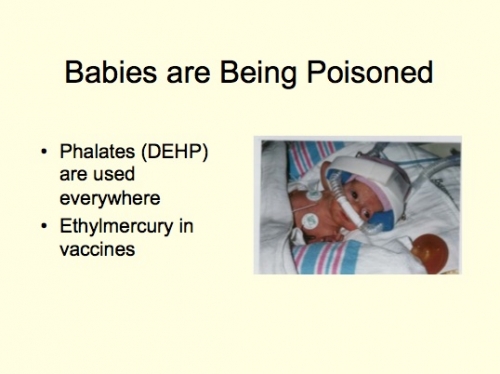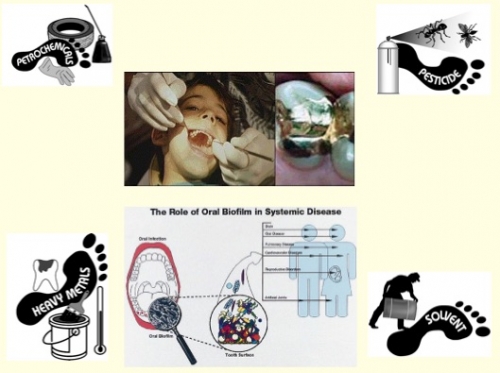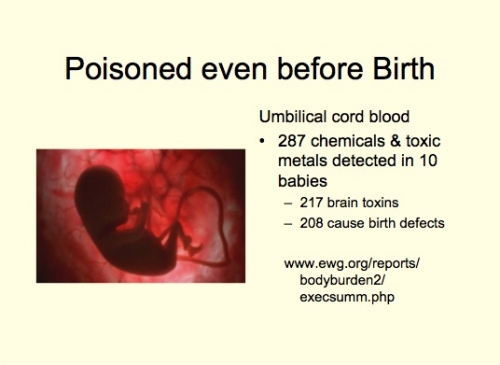Why Raise Unhealthy Children
Over the past 50 years, as infectious childhood diseases like polio, smallpox, rheumatic fever, and diphtheria have largely been controlled and have taken a natural course of decline; while chronic conditions of less obvious origins have taken their place. Asthma, autism, attention deficit and hyperactivity disorders (ADD and ADHD), childhood brain cancer and acute lymphocytic leukemia have all increased. Five to ten percent of couples are infertile. Up to half of all pregnancies end in miscarriage. Three to five percent of babies are born with birth defects followed by a host of health problems— likely due to a variety of environmental toxins, such as solvents, pesticides, PCBs, lead and mercury.

Human health problems are on the rise, and it is believed that toxic exposure is the key reason and a correspondingly decline in our nutrition.
Everyone is contaminated today, even newborn babies. Scientists have developed a much fuller understanding of children's vulnerability to chemicals and toxic metals, discovering links between a host of health problems — including asthma, childhood cancer, and brain damage — and such common contaminants as solvents, pesticides, PCBs, lead and mercury.

Some chemicals are directly toxic to an exposed child — lead and mercury, for example, which harm a developing brain — while other chemicals induce a chain of events that may culminate in a diagnosed health problem later in life. Hormone-mimicking chemicals like dioxins and furans, for example, could induce delayed cancers in hormone-sensitive tissues like the breast, testicle, or prostate gland. Chemicals like PCBs or DDT can reduce growth rates in the womb, initiating in low birth weight babies and lasting, internal survival mechanisms that cascade into cardiovascular disease or diabetes later in life.
The fact is, a child can bear a lifelong imprint of risks from the countless molecules of industrial or Dental pollutants that find their way through the placenta, down the umbilical cord, and into the baby's body. The consequences — health disorders, subtle or serious — can surface not only in childhood but also in adulthood.
Studies now support origins in early life exposures for a startling array of adult diseases, including Alzheimer’s, mental disorders, heart disease, and diabetes.

For example laboratory studies show increased deposits of the Alzheimer-related protein amyloid in the brains of older animals exposed to lead as newborns, but not in animals that were exposed to an equal amount of lead as adults. And over the past two decades numerous studies have linked low birth weight with adult onset of coronary heart disease, diabetes, stroke, hypertension, depression and other conditions.
Low birth weight can arise not only from poor maternal nutrition but also from a host of industrial pollutants, including arsenic, mercury, lead, organic solvents, PCBs, and pesticides, including DDT. Miscarriage and Low birth weight has also been associated with and caused by dental pathogens that have been found in periodontal or gum disease.
There has also been an ever increasing rate of childrens dental decay and crooked teeth.
The extensive use of pesticides, insecticides and other toxic chemicals since the Second World War may have a pernicious influence on normal jaw and tooth development. These chemicals have a two fold effect —both on the mother’s nutrient status and the baby’s developing health.
There is evidence that these chemicals greatly contribute to bone and teeth deformities. In one study in Ireland, the use of fungicides to combat potato blight in the 1980s was linked to a high incidence of various physical malformations, including bone and facial deformities in babies. In another six-year investigation, published in Wise Traditions, herbicides and fungicides were found to be culpable in causing severe bone and dental abnormalities in horses, deer, elk, antelopes, birds and other animals. Astonishingly, this study that identified numerous malformations including overbites and overjets (“buck teeth”), underbites (“bulldog appearance”), crooked and crowded teeth, and cleft palates.
One explanation is that pesticides greatly use up our stores of vitamin A, so critical for proper bone formation. In fact, the toxicity of these chemicals derives from the fact that they disrupt vitamin A pathways.
Immune system dysfunction is a cause of multiple human autoimmune diseases, ranging from rheumatoid arthritis to multiple chemical sensitivities and Gulf War Illness. A lack of vitamin A hormone (retinoic acid) appears to play a key role in autoimmune disease. The deficit may be the result of a genetic deficiency in synthesis of the hormone, of exposure to environmental chemicals which interfere with hormone synthesis, or of a combination of the two. Prevention may be achieved by the use of vitamin A-rich diets and by avoidance of exposures to appropriate environmental chemicals. Synergistic supplementation with Vitamin A, Vitamin D3 and Vitamin K2 has been shown to have a profound effect on the immune system and other health parameters.
The failure of the medical and dental community to solve these problems, in spite of spending billions of tax dollars over this period, can be traced mostly to their insistence on a flawed, disease model approach to health. In this failed system both the dentist and medical doctor look at health in a far too simplistic manner - simply the absence of disease or the absence of risk factors. Thus, rather than look for underlying causes and factors that lead to disease, and correcting these, they treat only risk factors and symptoms.
Disease rarely, if ever, just ‘happens’. Rather, disease is preceded by a metabolic or physiological dysfunction. These imbalances emerge slowly and progress continuously, but generally are not noticeable because our bodies work very hard at accommodating the imbalances.
However, if the cause of the dysfunction goes unrecognized, then the battle for balance can be a losing one.
Maintenance of health after a disease process has been reversed is far more difficult than it was when we were in our original good health.
Simply put, when your chemistry is in balance, you have resistance to disease. When it is out of balance, you have susceptibility to disease that shows up first in the mouth in the form of dental decay and gum disease – “a mouth full of evidence of where you have been and where you are heading”.
From pre- conception to conception, from teat to adulthood we have the ability to maximise our Genetic Blueprint.
We need knowledge and information that we can trust and has stood the test of time.
The answer to all of these problems is in learning how to support the body’s winning design through Balancing Body Chemistry before conception and beyond.
